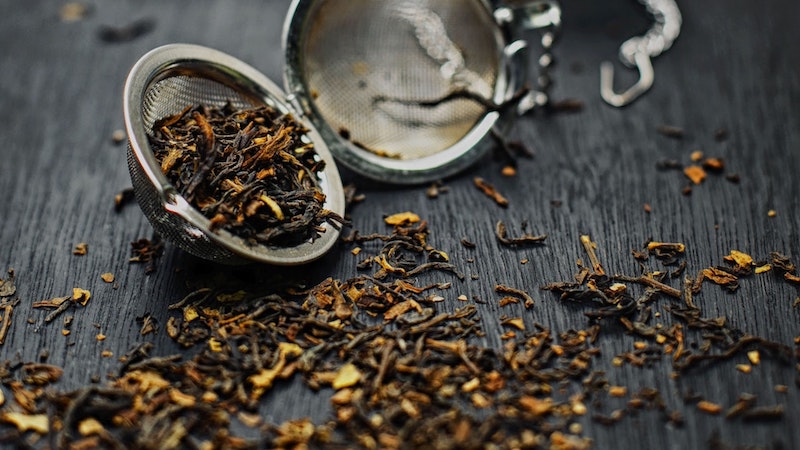Black Tea
Episode #6 of the course The science of tea by Lukasz J. Binkowski
Welcome to the sixth lesson of the course!
Today, we will talk about the most popular tea in the world: black tea. The popularity of other types of tea is growing, but black tea is still the most commonly consumed.
Bohea Tea
It is crucial to remember that all types of tea—black, green, white, oolong, and others—come from the same plant, Camellia sinensis (see Lesson 1 for details). The difference between types is a result of the production process described in the previous lesson.
The production of black tea dates back to the beginning of 17th century in Wuyishan (Fujian Province in China). It is said that it was created by over-oxidation of oolong tea or leaving a tea to dry for too long. Black tea was a new taste then, and since it withstood transportation better, it was dispatched to distant markets as Bohea tea. If you want to check how the first teas tasted in Europe, try Wuyi tea from Fujian Province. In those times, many people, even traders, believed that black tea came from a different plant called Thea bohea.
What’s So Special about Black Tea?
Black tea, unlike green and white teas, is fully oxidized during the processing. This results in a slightly different composition of the infusion and the inclusion of other antioxidants. Two of these antioxidants that are at their highest concentrations in black tea are thearubigins and theaflavins. They are responsible for the darker color of black tea; however, the name black tea comes not from the color of the infusion but from the color of the oxidized leaves.
What’s more, in China, black tea is called red tea, since the infusion has a reddish color. The Chinese use the term “black tea” for fermented tea such as Pu-erh, which in Europe is called red tea. Be careful of this confusion.
Brewing and Serving
Black tea requires the highest temperature of all teas for brewing: 95°C (203°F). The pot or cup should be warmed just before the water is poured into it to keep the water at the correct temperature level during brewing. Pouring water of 95°C (203°F) into a cold pot or cup will result in the cooling of water to below the desired temperature.
Brewing should usually take between three and six minutes. Longer brewing will result in a greater bitterness from the tannins (flavonoids).
Black tea is usually served with accompaniments such as sugar, milk, or lemon. Such traditions appeared due to the poor quality of tea in times when the price of tea was very high. Adding milk or sugar takes the edge off the bitterness of a low-quality infusion. Today, all these supplements are a matter of personal preferences and taste. However, there are some teas, such as Darjeeling and Lapsang Souchong, that should never be drunk with any accompaniments, since they may destroy the real taste of tea and compromise its high quality.
Varieties
If you live in the US, Europe, or India, you probably frequently drink black tea. The most popular black teas in Western countries are blended teas, e.g., Breakfast tea or Russian Caravan tea. Blending is a process of mixing different teas together to produce a final product. Most tea bags are produced in that way.
However, every tea fan should try single-origin black teas such as Darjeeling, known as the champagne of teas due to its distinctive aroma; Lapsang Souchong, probably the best known smoked tea in the world, which derives its aroma from smoke-drying over pinewood fires; and Assam or Ceylon, which are traditional. Some flavored teas are also very popular and deserve the attention of a tea fan, with the world-famous Earl Grey at the forefront. Flavored teas take the flavor from added spices, herbs, or fruits.
In our next lesson, we will talk about the first tea drunk in ancient China, which is still China’s most popular tea.
See you tomorrow,
Lukasz
Recommended book
Darjeeling: The Colorful History and Precarious Fate of the World’s Greatest Tea by Jeff Koehler
Share with friends

